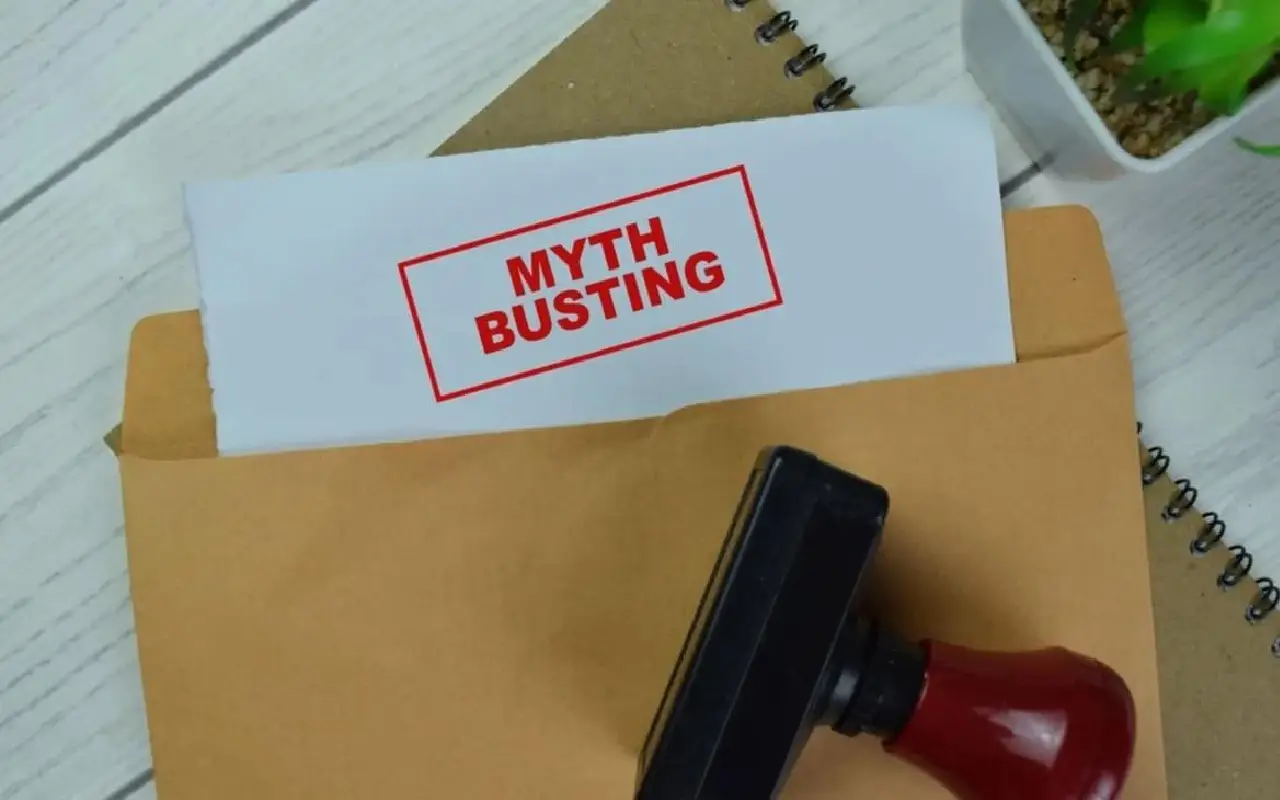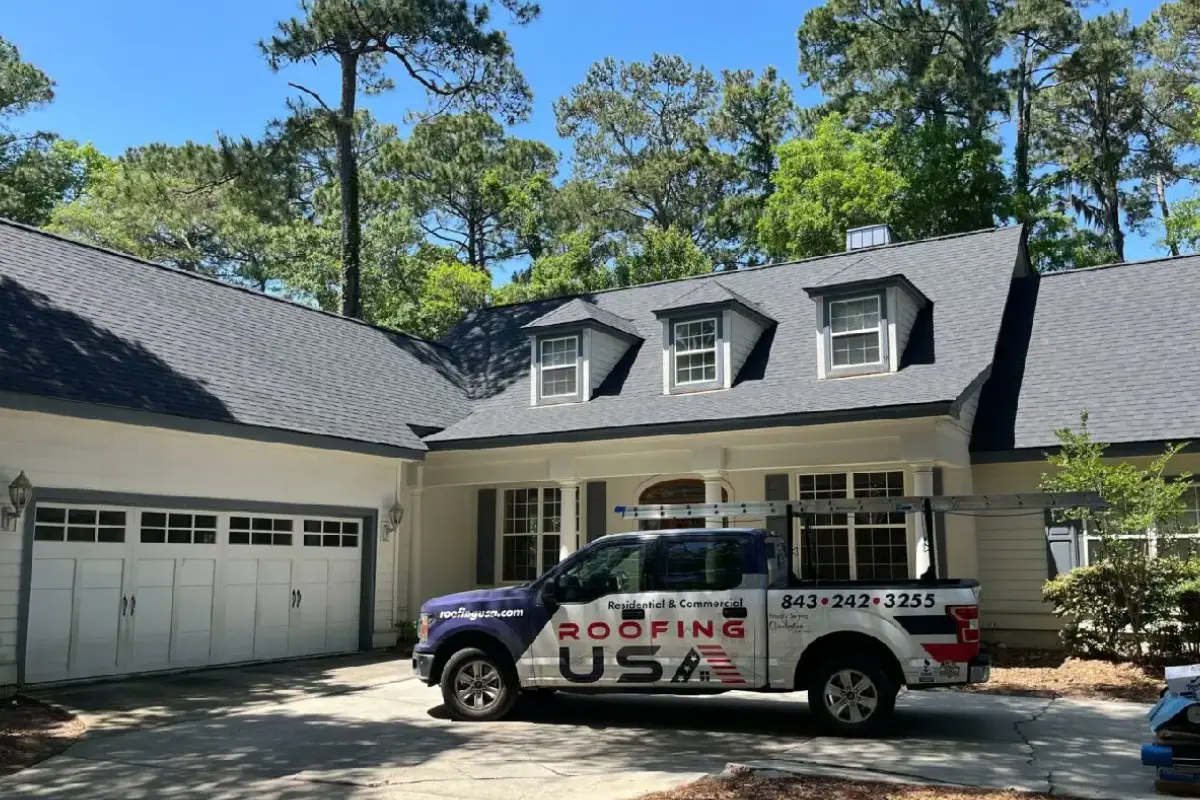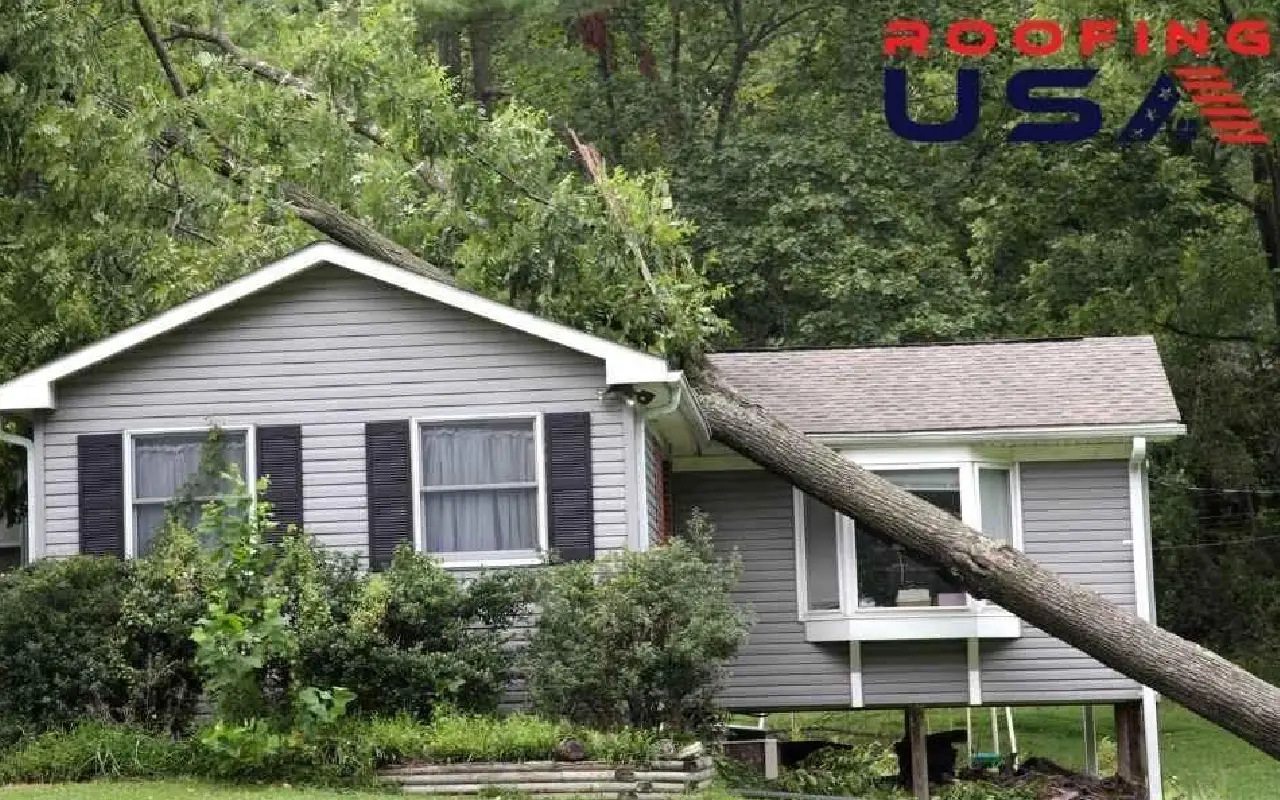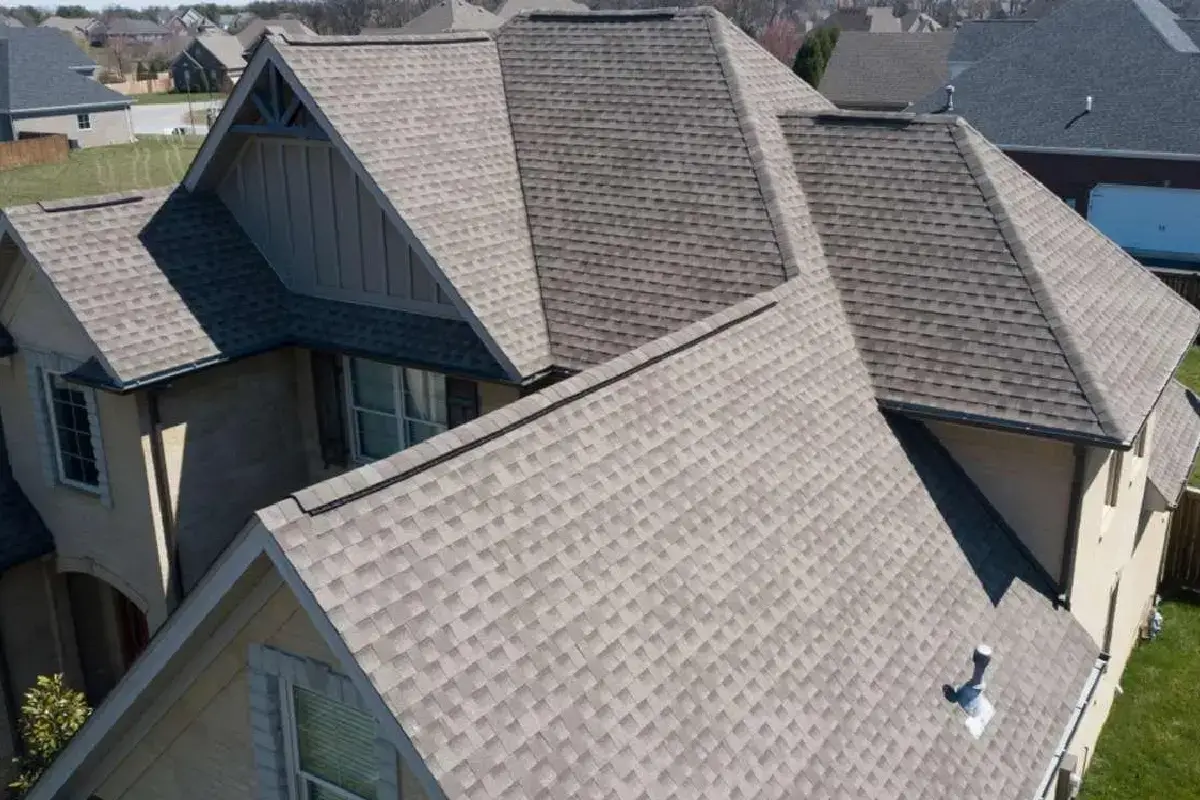Storms can cause significant damage to residential roofs, and if left unrepaired, this can lead to bigger problems in the future . However, homeowners often hold myths about roof storm damage that can complicate the repair process or make them vulnerable to fraudsters posing as roofing contractors.This blog will debunk some of the most common myths about residential roof storm damage and provide the information you need to make informed decisions.So, keep reading to learn these expert insights from Roofing USA that will protect your roof for years.
“A Few Missing Shingles Aren’t a Big Deal”
Some homeowners might believe that missing or cracked shingles are not a cause for concern. However, it’s important to understand that even seemingly minor damage to the roof can have far-reaching consequences if left unaddressed.Shingles are for protecting the roof from the elements and acting as a shield against rain, wind, and other potential hazards. When these protective layers are compromised, the risk of further and more extensive damage increases significantly.Over time, the combined effects of moisture, strong winds, and environmental factors can create a domino effect, exacerbating the initial problem and leading to even more significant issues. Therefore, it is vital to prioritize timely repairs and ensure the integrity of your roof to avoid potential complications down the line.To prevent this, homeowners should have their roofs checked regularly, especially after a storm. Professional roofing companies in Columbia, SC can help assess the damage and provide necessary repairs.
“If the Roof Isn’t Leaking, It’s Fine”
Even without visible leaks , storms can cause hidden damage with long-term consequences. For example, compromised roofing underlayment or weakened trusses may not be immediately noticeable but can pose significant problems in the future.
Importance of Proactive Checks After Storms
It is crucial to conduct regular inspections to proactively identify and address any potential issues before they escalate and result in more severe damage. Let’s explore reasons why you should be proactive about roof damage.
- Early Detection of Damage: Proactive checks after storms can help detect any damage, visible or hidden, at an early stage. Early detection can lead to quick repairs, preventing minor issues from escalating into major, more costly problems.
- Ensures the Roof Longevity: Regular inspections and resulting repairs help maintain the roof’s integrity, ensuring its longevity. A well-maintained roof can withstand future storms better, offering long-term savings.
- Prevents Interior Damage: Roof damage can lead to leaks, which can cause extensive damage to the house interior, including the walls, ceilings, insulation, and electrical wiring. Regular post-storm checks can identify potential leak points, averting such internal damage.
- Safeguards Health: Moisture entering the house through a storm-damaged roof can lead to mold and mildew growth, posing risks to the occupants’ health. Regular roof inspections can help in averting such health risks.
- Maintains Home Value: A well-maintained roof adds to the aesthetic and structural value of the house. Frequent checks ensure the roof remains in good condition, preserving the home’s value.
- Prevents Insurance Claim Rejection: Insurance companies may reject claims if regular maintenance is not performed on the roof. Proactive checks after storms can serve as evidence of maintaining the roof, helping in successful insurance claims.
By staying vigilant and taking early action, you can ensure the longevity and structural integrity of your property. It is recommended that homeowners have their roofs checked by a roof leak repair specialist at least once a year, especially after any severe weather event.
“All Roofing Materials Are Equally Susceptible”
Different roofing materials have varying strengths and weaknesses in storm scenarios.Let’s discuss the different kinds of roofing materials and their strengths and weaknesses:
- Metal roofs: Metal roofs are known for their durability and can withstand hail and strong winds better than other materials. They offer excellent protection against storm damage . However, they can be noisy during heavy rain and may dent or corrode over time.
- Asphalt shingle roofs: Asphalt shingle roofs are cost-effective and easy to install. However, they are more prone to damage from high winds and hail than metal roofs. Additionally, their lifespan is generally shorter.
- Tile roofs: Tile roofs are highly durable and can withstand harsh weather conditions, including storms. They provide excellent protection against wind and fire. However, they can be heavy, making them more susceptible to structural issues during severe storms.
- Slate roofs: Slate roofs are highly resistant to storm damage, including hail, wind, and fire. However, they are expensive, brittle, and require professional installation and maintenance.
- Wood shake or shingle roofs: Wood roofs offer a natural and aesthetically pleasing look. Additionally, they require regular maintenance and may be prone to rot and insect infestation.
Consider the local climate and specific storm risks when choosing the right roofing material for your area. Consulting with a roofing professional can help determine the best option for your needs.

“Insurance Always Covers Storm Damage”
It’s important to understand that insurance policies are not all created equal. The coverage for storm damage can vary depending on the policy you have.Some policies may provide replacement costs for the damages incurred, ensuring you are fully covered. On the other hand, some policies may only offer a portion of the costs, leaving you responsible for the remaining expenses.It’s crucial to review your policy carefully to know what kind of coverage you have. In addition to the coverage details, it’s worth noting that the insurance company may require documentation of regular maintenance and inspection of the roof to approve your claim. This serves as a precautionary measure to ensure that the damage was not a result of negligence or lack of proper care. By documenting these routine checks, you can provide the necessary evidence for your claim and increase the chances of its approval.
“New Roofs Are Practically Immune to Storms”
While it is true that new roofs offer better protection against storms, this doesn’t mean they are completely immune to damage. Factors such as the quality of the roofing material, the installation process, and the prevailing weather conditions can all play a role in compromising the roof’s durability.It is crucial to note that the warranty period alone does not provide a comprehensive indication of the roof’s lifespan. Several other factors come into play, influencing its longevity.Factors such as the quality of materials used, the installation process, regular maintenance, and exposure to environmental elements all play a significant role in determining the overall lifespan of a roof. Therefore, it is essential to consider these factors alongside the warranty period when assessing the expected durability of a roof .
“Roofing Contractors Always Inflate Damage Estimates”
Reputable roofing contractors, like Roofing USA, understand that trust is essential in their industry. We prioritize ethics and integrity, going above and beyond to maintain a strong reputation built on honesty, reliability, and exceptional work.Unfortunately, in this industry, some fraudulent individuals pose as roofing contractors, preying on unsuspecting homeowners. These scammers are driven by greed and are looking to make a quick buck by resorting to unethical practices.They may inflate damage estimates, use subpar materials, or even disappear without completing the job. Homeowners must be vigilant and do their due diligence when hiring roofing contractors to avoid falling victim to these scams.By thoroughly researching and choosing reputable contractors, homeowners can ensure that their roofing projects are handled professionally and with integrity.
“Only Major Storms Cause Real Damage”
Even seemingly minor storms, with their strong winds and heavy rain, have the potential to wreak havoc on residential roofs. The powerful gusts can loosen shingles, while the downpour can lead to leaks and water damage. Homeowners must be aware of the potential risks and take necessary precautions to protect their roofs from unforeseen weather events.Additionally, the accumulative effects of multiple minor storm events, such as heavy rain, strong winds, and hail, can gradually wear down the roof’s integrity over time. This can result in weakened shingles, damaged flashing, and potential leaks, ultimately leading to costlier problems in the future if not addressed promptly.Regularly inspect and maintain the roof to prevent any potential issues from developing into headaches down the road.

Get a Timely Roof Repair With the Best Roofing Company Columbia, SC Has to Offer
Residential roofs are essential to any home and require regular maintenance and inspection. It’s crucial to demystify the common myths homeowners may hold about storm damage to ensure timely repairs and prevent future problems.By working with the best roofing company Columbia, SC has to offer, homeowners can receive an accurate assessment of any damage and make informed decisions about repairs and replacement.At Roofing USA, we pride ourselves on providing comprehensive roofing solutions to our clients. With a wealth of experience and expertise in dealing with storm damage, we can effectively identify and repair issues efficiently. Additionally, we provide documentation of all maintenance and repair work, which could prove instrumental in insurance claims. Trust Roofing USA to help keep your home safe and secure, no matter the weather. Contact us today to learn more about our services!












